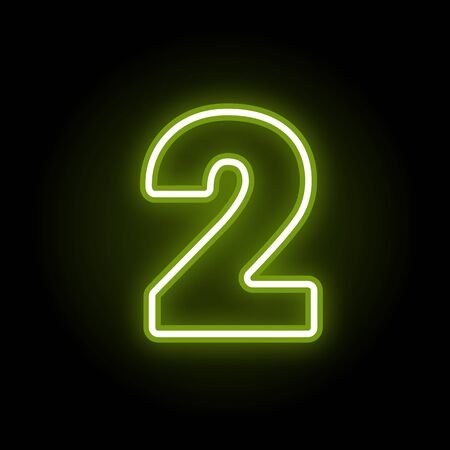Unlocking the Power of Dreams for Problem Solving
Have you ever woken up with a sudden solution to a problem that’s been bugging you for days? In the American tradition of innovation and creative breakthroughs, we often celebrate those “eureka” moments that seem to arrive out of nowhere—sometimes even in our sleep. Recent research and personal anecdotes alike reveal that dreams aren’t just nighttime entertainment; they’re powerful sources of creativity, insight, and unconventional solutions. By tapping into the unique wisdom of our dreaming minds, we can address real-world challenges in ways that defy logic but deliver results. This article explores how Americans are beginning to harness dream wisdom as a cutting-edge tool for creative problem solving, leveraging the very hours we spend resting to fuel ingenuity and success during waking life.
2. How the Sleeping Brain Generates Insights
When you drift into sleep, your brain doesnt simply shut down—its actually hard at work, weaving together memories, emotions, and fragments of knowledge in ways that can lead to unexpected breakthroughs. Neuroscience research shows that during REM (Rapid Eye Movement) sleep, the prefrontal cortex—the part of the brain associated with logical thinking—relaxes its control. This allows more abstract, creative connections to surface. Psychologists refer to this as “hyperassociativity,” where unrelated ideas come together in novel ways.
The Science Behind Dream-Driven Creativity
Studies from leading American universities like Harvard and MIT reveal that while we sleep, our brains replay and reorganize recent experiences, making it possible to solve problems we struggled with during waking hours. The neurotransmitter acetylcholine increases during REM sleep, enhancing memory consolidation and creativity. Meanwhile, levels of norepinephrine drop, reducing stress and self-censorship—key factors for uninhibited problem-solving.
American Innovators Inspired by Dreams
| Name | Invention/Discovery | Dream Influence |
|---|---|---|
| Elias Howe | Sewing Machine Needle | Dreamed of warriors with spears piercing fabric, inspiring his needles eye design. |
| Larry Page | Google Search Algorithm | Envisioned downloading the entire web in a dream, sparking Google’s foundational idea. |
| Nikola Tesla | Alternating Current Motor | Visualized rotating magnetic fields in vivid dreams before building a working model. |
The Power of Letting Go: Lessons from Psychology
Cognitive psychologists suggest that stepping back from a problem—by sleeping on it—lets the mind process information subconsciously. This is why phrases like “sleep on it” are common in American culture; theyre rooted in scientific reality. By understanding how your brain leverages dreams for creativity, you can intentionally harness this nightly resource for personal and professional growth.

3. Techniques to Remember and Decode Your Dreams
For many busy Americans, the idea of using dreams for creative problem solving sounds appealing but impractical—who has time to keep a dream journal or decode cryptic symbols before their first coffee? Luckily, there are straightforward techniques you can weave into your daily (and nightly) routine to remember and interpret your dreams more effectively. Here’s how you can make dream wisdom work for your real-world challenges, even on a tight schedule.
Practical Strategies for Dream Recall
| Technique | How To Do It | Why It Works |
|---|---|---|
| Set an Intention Before Bed | Take 30 seconds before sleep to silently ask yourself to remember your dreams or focus on a specific issue. | Directs your subconscious attention, making it more likely youll recall relevant dreams. |
| Keep a Phone or Notebook Nearby | Jot down keywords or record a quick voice memo immediately upon waking—even if it’s just fragments. | Your memory fades fast; capturing details right away preserves key insights. |
| Avoid Hitting Snooze | Try to wake up naturally or with a gentle alarm instead of repeatedly snoozing. | Snoozing disrupts REM cycles, making dream recall harder. |
| Limit Late-Night Screens | Aim to turn off devices 30 minutes before bed. Try reading or listening to calm music instead. | Blue light and mental stimulation interfere with sleep quality and memory formation. |
Decoding Dream Messages for Problem Solving
Step 1: Identify Patterns and Emotions
If you notice recurring themes (like being chased or losing something), jot these down along with any strong emotions. Often, these patterns relate directly to real-life stressors or desires.
Step 2: Connect Symbols with Daily Life
You don’t need a psychology degree—just ask yourself: “What does this symbol mean to me?” For example, if you dream about being late, consider where you feel behind in life. Use this self-reflection as a springboard for practical action steps during the day.
Quick Reference Table: Common American Dream Symbols & Potential Meanings
| Dream Symbol | Possible Meaning in U.S. Culture | Troubleshooting Tip |
|---|---|---|
| Losing Wallet/Phone | Anxiety about security or missing out on opportunities | Check your priorities; are you feeling overwhelmed? |
| Tornadoes/Storms | Feeling out of control with work or family demands | Identify areas where you need support or boundaries. |
| Driving a Car You Can’t Steer | Lack of direction in career or personal goals | Create a small actionable step towards regaining control. |
| Being Chased But Not Caught | Avoiding confrontation or responsibility at home/work | Name the issue you’re avoiding and plan one way to face it tomorrow. |
Your Personalized Dream Toolkit for Everyday Life
The key is consistency—not perfection. Even if you only catch snippets of your dreams, over time these fragments can lead to breakthroughs. By incorporating these dream recall and interpretation strategies into your routine, you’re not only tapping into your subconscious creativity but also turning sleep into a productive ally in solving real-world problems—no extra hours required!
4. Turning Nighttime Wisdom into Morning Action
Dreams can be more than random images—they often carry hidden solutions to our waking problems. The trick is turning your midnight inspiration into practical steps once the alarm rings. Here’s a step-by-step guide, tailored for American work and life scenarios, to make your dream insights count.
Step 1: Capture Your Dream Details Immediately
Before checking emails or scrolling social media, jot down everything you remember from your dream—no matter how odd it seems. Use a bedside notebook or a note-taking app on your phone for quick access.
Step 2: Identify Key Symbols and Emotions
Look for recurring symbols or strong feelings in your dream. For instance, dreaming about being lost in an office maze could reflect confusion over a new work project.
Step 3: Connect Dream Themes to Real-Life Challenges
Ask yourself: What real-world situation does this dream remind me of? Is there a work issue, relationship challenge, or personal goal that resonates with the dream imagery?
| Dream Scenario | Real-World Example | Possible Insight |
|---|---|---|
| Lost in an endless office hallway | Starting a new job or project at a tech company | You may need clearer onboarding or mentorship support |
| Arguing with a friend over dinner | Tension with a coworker during team meetings | Time for an honest conversation to clear the air |
| Winning a game after repeated tries | Pursuing a promotion after multiple rejections | Persistence pays off—don’t give up just yet |
Step 4: Brainstorm Practical Actions Inspired by Your Dream
Think about at least one concrete action you can take today based on your dream’s message. It might be reaching out to a colleague, revising your strategy, or simply pausing for self-reflection.
Example Morning Action Plan:
| Dream Insight | Action Step |
|---|---|
| I felt overwhelmed by paperwork in my dream. | Create a prioritized to-do list before starting work. |
| I dreamed of missing my train. | Double-check meeting times and prep materials the night before. |
Pro Tip:
If you’re struggling to interpret your dreams, consider discussing them with a trusted friend or mentor. Sometimes an outside perspective makes all the difference.
The key is consistency—make reviewing your dreams part of your morning routine, just like brewing that first cup of coffee. Over time, you’ll find that dream wisdom can become one of your most creative problem-solving tools in both personal and professional life.
5. Stories of Breakthroughs: American Successes Fueled by Dreams
Throughout American history, the power of dreams to unlock creative solutions and drive innovation is more than just folklore—it’s a proven phenomenon. Countless individuals and companies have credited their nighttime visions for sparking ideas that changed industries or solved persistent problems. Here are some inspiring examples that highlight how dream wisdom has shaped real-world outcomes in the U.S.
Dream-Driven Innovations
| Person/Company | Industry | Dream Insight | Resulting Breakthrough |
|---|---|---|---|
| Elias Howe | Invention | Dreamed of being attacked by warriors with spears that had holes near the tips. | Inspired the design of the modern sewing machine needle, revolutionizing garment manufacturing. |
| Larry Page (Google) | Technology | Had a dream about downloading the entire web and ranking pages by links. | Became the foundational idea behind Google’s search algorithm, transforming online information access. |
| Dmitri Mendeleev (Periodic Table, celebrated in U.S. science) | Chemistry/Education | Saw elements arranged in a table during a dream. | Led to the creation of the periodic table, now central to American scientific education and research. |
| Jack Nicklaus | Sports | Visualized a new golf grip technique in his sleep. | Helped him win major championships and inspired other athletes to use visualization techniques. |
| MGM Studios (Wizard of Oz) | Film & Entertainment | The film’s iconic imagery was inspired by dreamlike sequences and surreal visuals drawn from director Victor Fleming’s dreams. | Became one of America’s most beloved movies, influencing generations of filmmakers. |
Modern Companies Tapping into Dream Wisdom
It’s not just individuals—some innovative American companies actively encourage employees to pay attention to their dreams as part of their creative process. For example, DREAMS Foundation USA, a nonprofit based in California, offers workshops teaching staff at tech firms how to mine their dreams for product development ideas. Even Fortune 500 companies like Procter & Gamble have documented breakthroughs where solutions to design problems emerged after employees “slept on it.” This practice is now being integrated into wellness programs and creative retreats across Silicon Valley and beyond.
The Takeaway: Dreaming as an Untapped Resource for American Innovation
The stories above demonstrate that dreams can be more than random images—they can serve as incubators for breakthrough thinking. By valuing our subconscious wisdom, Americans from all walks of life are proving that creative problem solving doesn’t stop when we close our eyes—it might just be getting started. Whether you’re an entrepreneur, scientist, artist, or business leader, harnessing your dream insights could lead you to your next big idea.
6. Creating Your Own Dream Problem-Solving Routine
Integrating dream-based creativity into your everyday life isn’t just for artists or spiritual seekers—it can be a powerful tool for anyone striving for personal growth, productivity, and innovative problem solving in the American work culture. The key is to establish a routine that both values your dream insights and leverages them to tackle real-world challenges. Here’s how you can start building your own dream-fueled problem-solving system:
Step-by-Step Dream Integration Routine
| Step | Action | Pro-Tip (American Productivity Focus) |
|---|---|---|
| 1. Set an Intention Before Bed | As you wind down, focus on a specific challenge or question you want your dreams to help solve. Write it down in a journal by your bed. | Use affirmations like “Tonight, I’ll find creative solutions.” This primes your mind—just like prepping for a big pitch. |
| 2. Keep Tools Handy | Place a notebook, pen, or voice recorder within arm’s reach so you can capture dream fragments immediately upon waking. | Treat this like jotting down ideas during brainstorming sessions—speed matters! |
| 3. Morning Review & Reflection | Dedicate 5-10 minutes each morning to review and reflect on your dream notes, looking for symbols, metaphors, or surprising storylines. | Add this step to your morning routine, right after coffee—making it as habitual as checking email. |
| 4. Connect Dreams to Real Problems | Actively link any dream imagery or narrative to your current challenges. Ask yourself: “How could this relate to my situation?” | Use mind-mapping apps or sticky notes for visual thinkers—a favorite tool in American business culture. |
| 5. Experiment & Iterate | Apply at least one actionable insight from your dreams to your day’s work or decisions. Track what works and refine the process over time. | Treat this as an ongoing experiment—embrace the ‘fail fast, learn faster’ mindset popular in U.S. startups. |
The Power of Consistency and Reflection
Consistency is crucial: American productivity culture thrives on routines, so treat dream integration with the same respect you give your gym schedule or weekly planning sessions. Over time, you’ll notice patterns and recurring themes that point directly to innovative solutions—sometimes even before you’re fully awake! For best results, set aside a few minutes at the end of each week to review your dream journal entries and evaluate how these nighttime ideas have impacted your progress toward personal or professional goals.
Building Your Own Success Story
Remember: American self-improvement culture is all about taking action and measuring results. By incorporating dream wisdom into your daily workflow, you aren’t just sleeping on the job—you’re working smarter around the clock. Use this approach not only as a source of creative inspiration but as a legitimate strategy for tackling real-world challenges in business, relationships, and personal development. Start tonight; let your dreams become your secret weapon for success!


